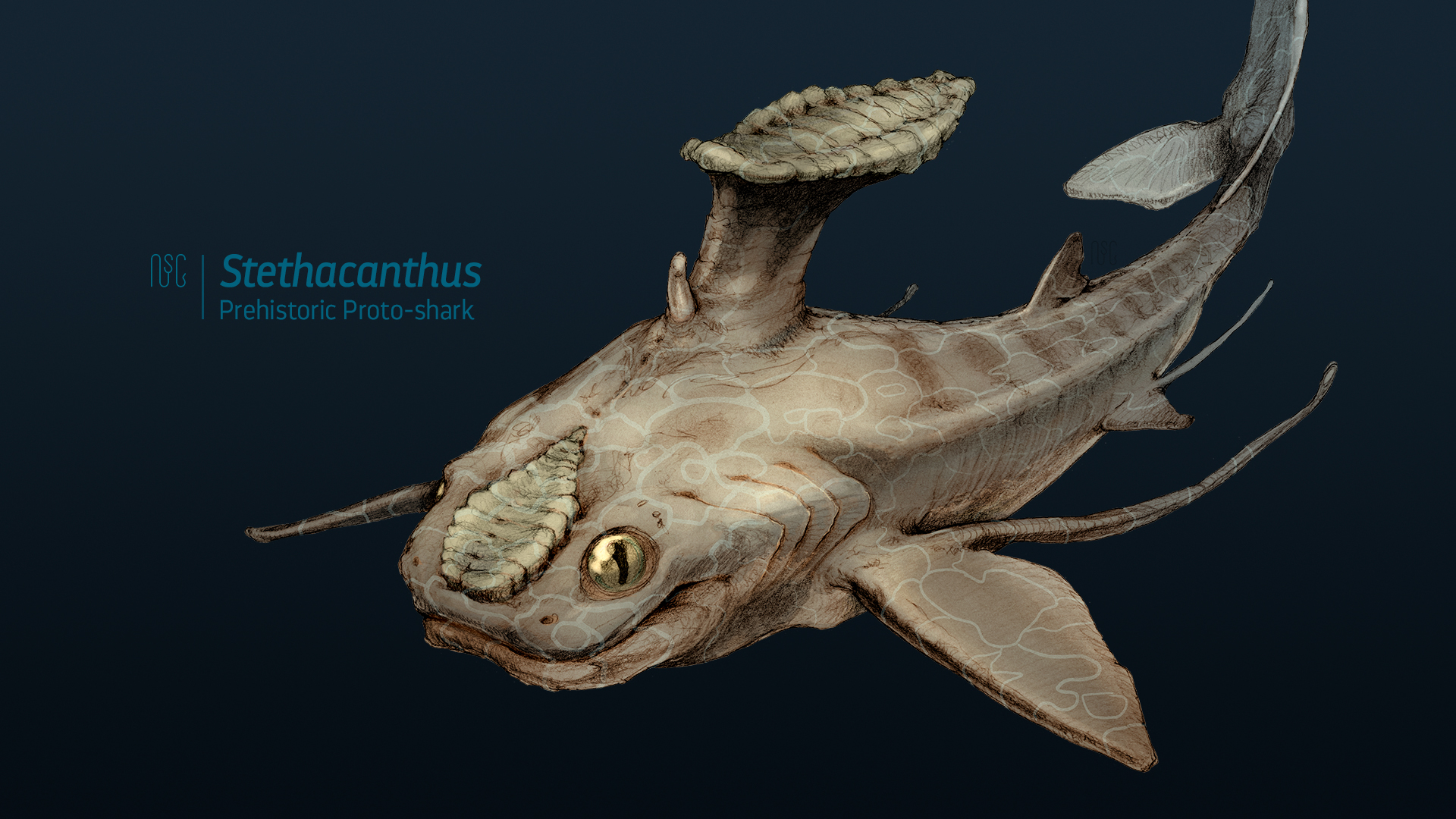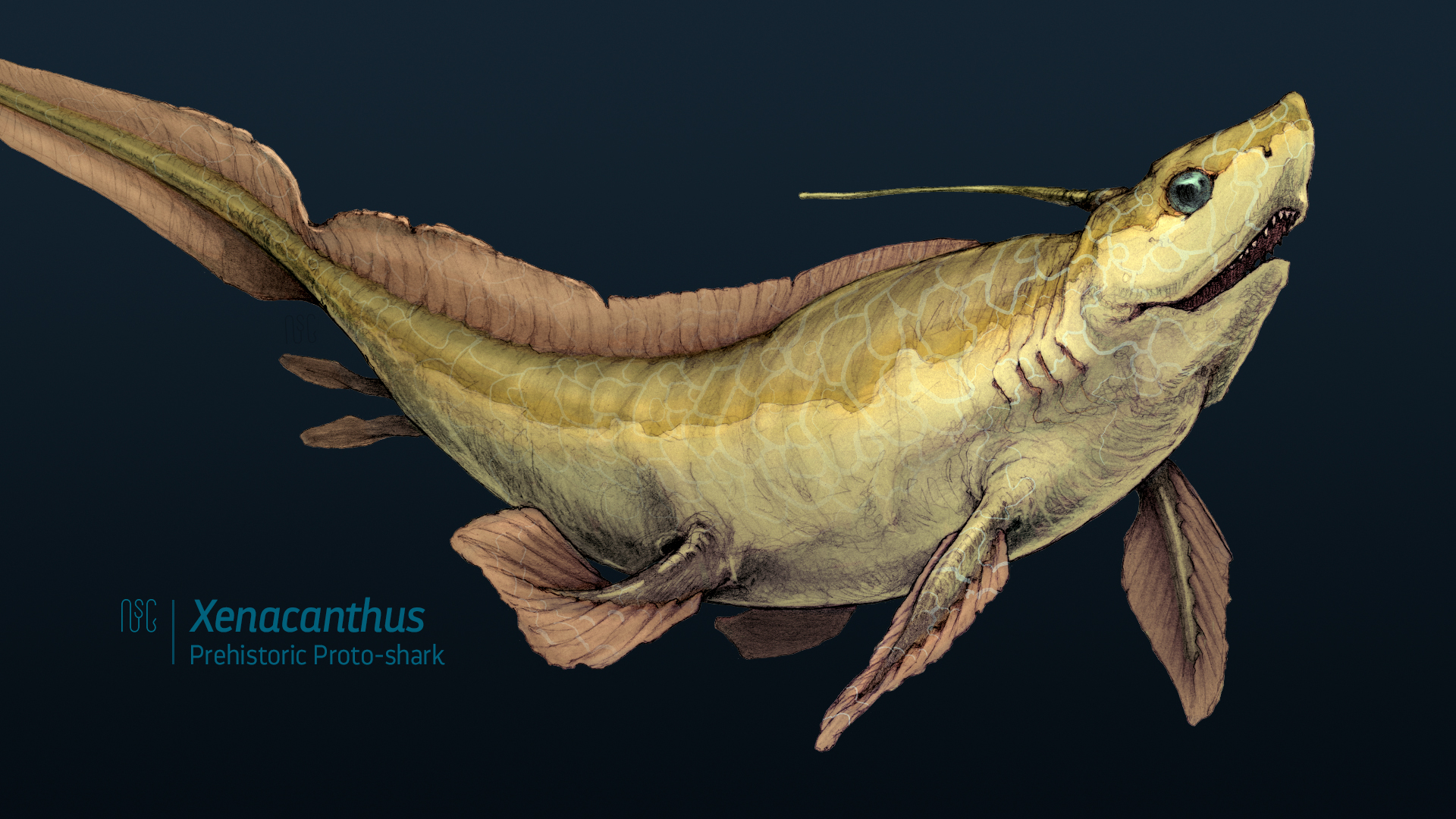Prehistoric Proto-Sharks
by Bobby Long


title
Prehistoric Proto-Sharks
agency
NearsightGraphite
Submission by
Bobby Long
Project Lead
Bobby Long: NearsightGraphite / Bobby Long: NearsightGraphite
Contributors
The Flandrau Science Center and Planetarium of Tucson, AZ commissioned a set of three illustrations of prehistoric proto-sharks (shark-like cartilaginous fish) from ancient seas. Accompanied by text descriptions, this suite of illustrations is on permanent display in the center’s “Undersea Discovery” exhibit.
• Heliocoprion (saltwater).
• Stethacanthus (fresh or salt).
• Xenacanthus (freshwater).
These are, of course, hypothetical body plans based on the latest guesses (at the time of writing this) from paleontologists and shark experts alike. Sharks’ skeletons are almost entirely made of cartilage, rather than actual bone, so skeletons of sharks are far more likely to break down over time. While their strong teeth are readily preserved in the fossil record, the rest of their fossilized body parts are exceptionally rare to encoutner in the present. This means a lot of clues to ancient sharks’ past and their body plans are not available to us, leaving us lots to learn.
Graphite and digital color. Average display size: 30x22”. 2024.